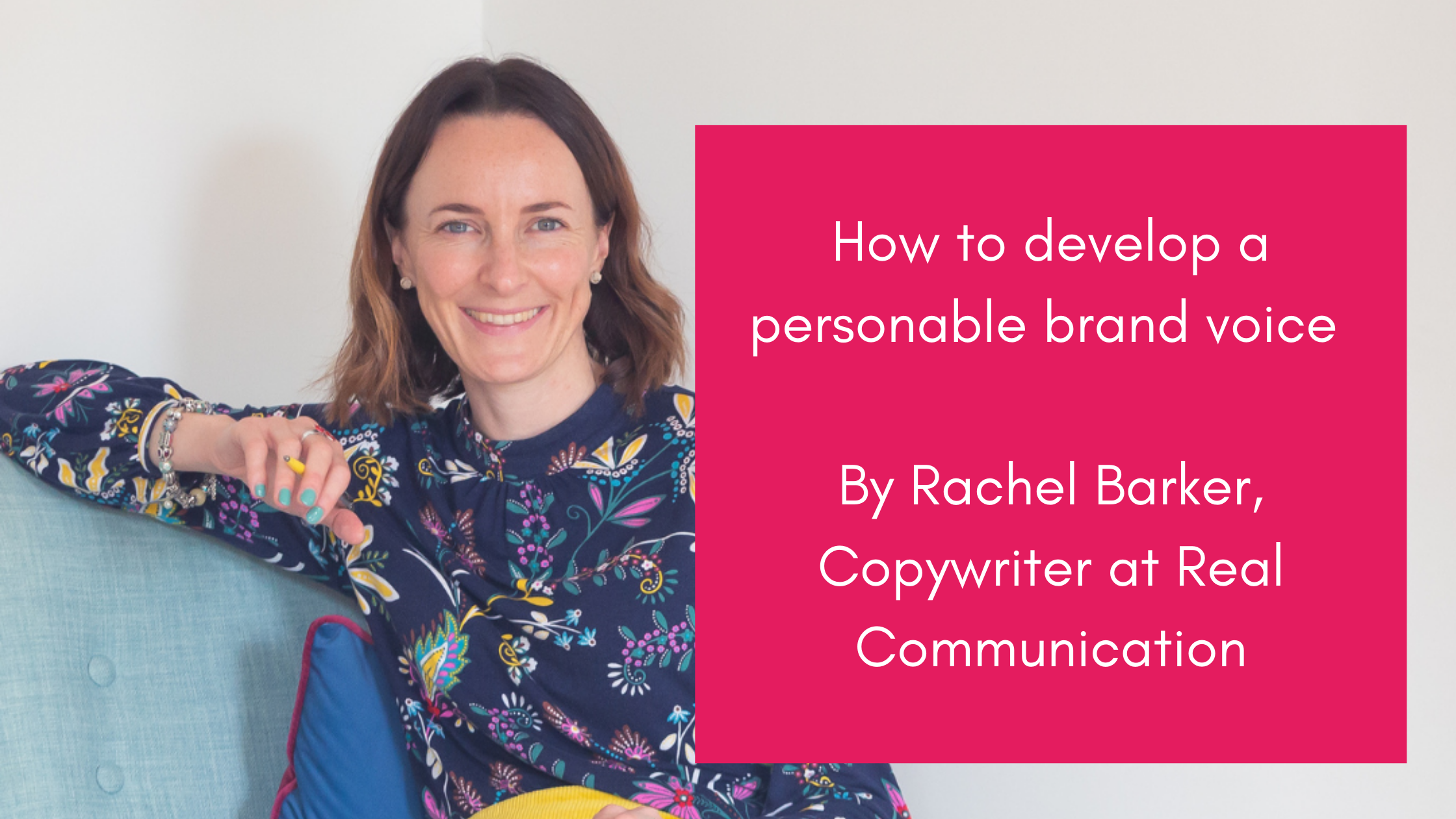
This week, we are lucky to have a guest blog from Rachel Barker of Real Communications. Rachel recently delivered a Masterclass for the VA Membership and the Members loved her calming style to copywriting and so I invited her to write for the wider VACT community.
How to develop a personable brand voice
A Guest Blog By Rachel Barker, Copywriter at Real Communication
You hear a lot of jargon in content marketing. CTAs, KPIs, B2B, SEO…
It can make the prospect of promoting your business far more complex and intimidating than it really is.
Marketing is simply about connection. Having conversations, building relationships and generating trust, so the right people want to work with you.
For your ideal client to feel an emotional connection to you and your brand – without meeting you in real life – your content has to represent your best ever conversation with that person.
So one marketing term that is worth getting your head around is brand voice. In this blog I’m going to show you how to find a natural voice for your brand, which will make it much easier to write consistent and compelling content that connects with your audience.
What is brand voice?
Your brand voice is simply the way you write – a broad reflection of your personality and values, or those of your business. It’s made up of your choice of words and punctuation, the length and rhythm of your sentences – even the emoji you use.
Brand voice is what humanises your business and creates a strong, natural connection with the people you want to work with. And it doesn’t need to be loud or quirky or outrageous or humorous. It simply needs to sound genuinely like you, and resonate with your ideal clients.
If you’re a business owner and the face of your brand, you’ll probably write in your own voice. If you have a team, it’s likely that your business has its own personality and a voice that more widely reflects your brand’s vision and values.
How do you define your brand voice?
Great news! If you write your own content, you don’t need to! In fact, I really recommend you don’t overthink it – putting our own content out there can be daunting enough without worrying it’s ‘in the wrong voice’.
So don’t overcomplicate it. You simply need to ensure the voice you land on does three things.
1. Sounds like you
Your authentic voice lets you stand out from other businesses and helps people build up a picture of what you’re like to work with. It’s also much easier to write in your own voice because it flows naturally and comfortably. So don’t worry about the rules of writing you learnt at school, or try to sound like everyone else on social media – that’s one of the best routes to writer’s block!
One tip I often give to clients is to say the words out loud while you’re typing. It’s a bit antisocial, but a great way to make yourself use genuine words and expressions that you would say in real life. Plus, because we have the benefit of the lovely backspace key, we can edit it to sound more eloquent than an actual conversation. It means you are using your own voice as a framework.
2. Recognises how your clients talk
When we come across people who sound like us, it’s comforting. We want to trust them. The best way to make your voice sound familiar is to think of words your clients would use themselves. Particularly when you’re describing what you do and how that would help someone. So rather than saying what you offer – think, how would they describe what they get? What language is already in their mind when they first come to you?
I recommend keeping a little notebook and, whenever you speak to a client at the start of a project, noting down how they describe their issues in their words. What are they looking for? You can also look through your testimonials and see how people describe how they benefited after working with you.
Don’t paraphrase your notes – write them exactly as your clients talk, because you can feed this language into your future content to resonate with similar people.
3. Sounds human
If you’re following the first two tips, to sound like yourself and use language that’s familiar to your audience, this one should fall into place naturally. But if all else fails, remember to sound like a human.
To stand the best chance of creating a connection with your reader, you want to use real words. That means stripping out anything overly long and complex and opting for language that’s easier to read and connect with.
So if you’d usually say, ‘Can I help you?’ to a client in conversation, don’t say, ‘Can I assist you?’ in writing. The extra syllable puts up a barrier, and makes us seem more detached from those we’re trying to connect with.
None of us want to spend any longer than necessary reading content from another company, so be respectful of your audience’s time. That doesn’t mean your voice needs to be overfamiliar or informal, just human, warm and real. Exactly how you would connect with that person in real life.
People often ask me what voice they should use if they have a broad audience with clients of varying ages, personalities and priorities. Adopting a real, human style will work every time, and your audience will love you for making your content easy to digest.
If you’re ever unsure if you’ve hit the right note, read it out loud. Do you talk like that? And be honest! Do your clients talk like that? If there are any words or phrases you stumble over, it’s likely they’ll catch your reader out too.
And finally…
The best way to develop and refine your voice is to simply start writing – and write as regularly as you can. Get a feel for how the words naturally fall onto the page. What sounds right, what sounds like you?
And which pieces of content do people respond to? What style makes them click through and love you even more?
Just make a start, and your voice will develop organically from there.
ps If you write content for your clients, it’s more important that you can define their voice. So that everything you write sounds exactly like they’ve written it themselves, and they can trust you to create content that will authentically grow their business.
Rachel has a “Write With Confidence course,” it’s a six-week live programme starting on 8th June designed specifically for virtual assistants, and will help them not only improve their own content, but also better support their clients with copy projects.
Meet Rachel Barker of Real Communications
Rachel Barker is a copywriter and mentor at Real Communication and helps brands to create a genuine connection with their audience. Specialising in website and sales copy, Rachel has helped hundreds of businesses over the last 12 years to attract better clients, raise their profile and create a brand that people believe in through personable and non-salesy content.
